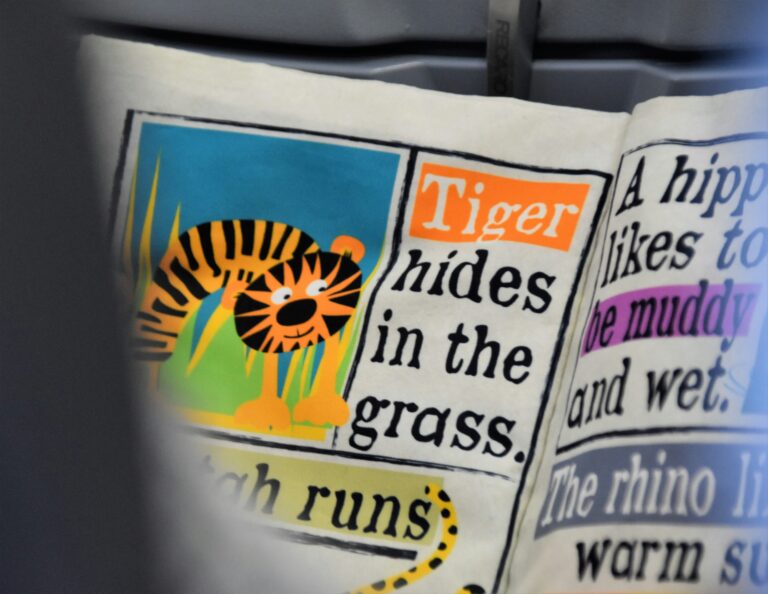The first time a child picks up a book, they’re unlikely to be a fluent reader, let alone know how to open it properly.
This is because like with any skill, you must start with baby steps before you can start walking. Or in this case, reading fluidly.
Through the course of their reading development, a child will go through 4 reading stages:
- Emergent reader (cannot read yet)
- Beginner reader
- Early reader
- Fluent reader
Throughout these stages there are skills that children develop in order to become fluent readers.
Before any child starts to read, they need to first master these 7 pre-reading skills:
1. Interest and motivation to read
In order to learn how to read, children must have a desire to read. They must be motivated in order to develop new skills, which will help them grow as a reader.
A way to inspire interest and motivation in your children is to read to them everyday and allow them to choose the books.
2. Visual perception
This is our brains’ ability to process what we see what our eyes have picked up.
When children learn to read, their visual perception needs to be accurate so that they can distinguish between foreground and background, and discriminate between colours, shapes, sizes and position in space. This helps children to visualise and process words in the long-term.
If your little one is having visual perception difficulties there are many activities that will help improve these skills.
3. Book and print awareness
Before learning to read, children will pick up books and enjoy the pictures without realising that the letters on the page can be deciphered to create meaning.
Children need to develop an understanding of how letters create words and these words can be put into sentences to create meaning.
Playing word games, pointing out words around children in their environment, modelling the correct way to handle books and using your finger to follow the text as you read a book to them are ways to improve their book and print awareness.
4. Narrative and listening skills
When listening to a story, a child is able to focus on what the story is about, use their imagination and develop expectations of how the story will end.
Through this process, they are able to develop their comprehension skills, vocabulary and memory. Good narrative skills allow a child to describe things and retell events. Both narrative and listening skills are essential for a child to learn how to read as they assist in improving vocabulary, predicting, understanding, concentration and memory.
5. Letter Knowledge
In order for children to read words, they need to understand that letters have names and sounds, and can be uppercase and lowercase.
Ways to help improve your child’s letter knowledge are to read alphabet books, teach them the letters in their name and make them aware of letters in their environment by looking at license plates on cars, recipe books, labels on groceries and other items.
6. Phonological and phonemic awareness
This is the ability to hear that words are made up of smaller sounds and these sounds can be manipulated. When a child hears a word like ‘pat’, they should be able to identify the different letters and their sounds – /p/ /a/ /t/. They should also be able to hear sound patterns such as rhyme and syllables.
Singing nursery rhymes, breaking down words into sounds, counting syllables, and changing the beginning sounds of words are some of the many activities that can help improve phonological and phonemic awareness.
7. Vocabulary
Lastly, knowing the names of things is an essential skill in order to learn how to read. The greater your child’s vocabulary the easier it will be for them to learn how to read and enjoy reading.
When reading stories to your children they can hear the words and connect them with pictures in the storybook. This is a great way to improve their vocabulary.
Other ways you can improve vocabulary include having conversations with your children and explaining unfamiliar words to them, asking them to describe things such as their toys or food, reading stories everyday and playing word games .
Photo by Marisa Howenstine on Unsplash







